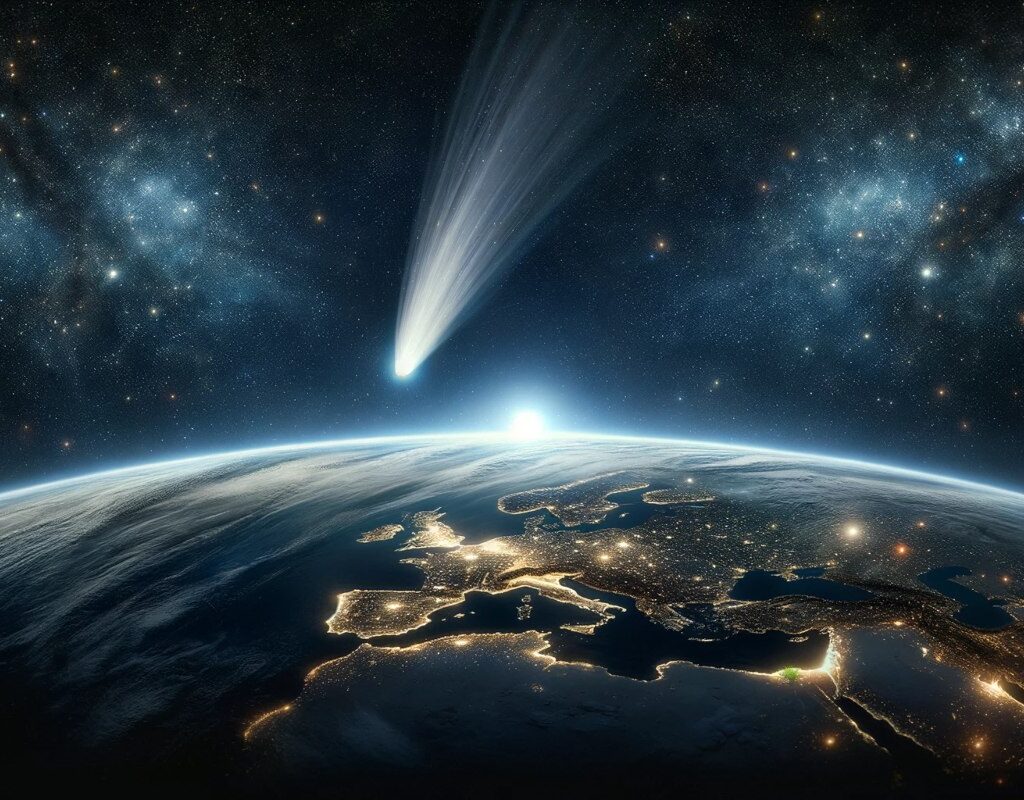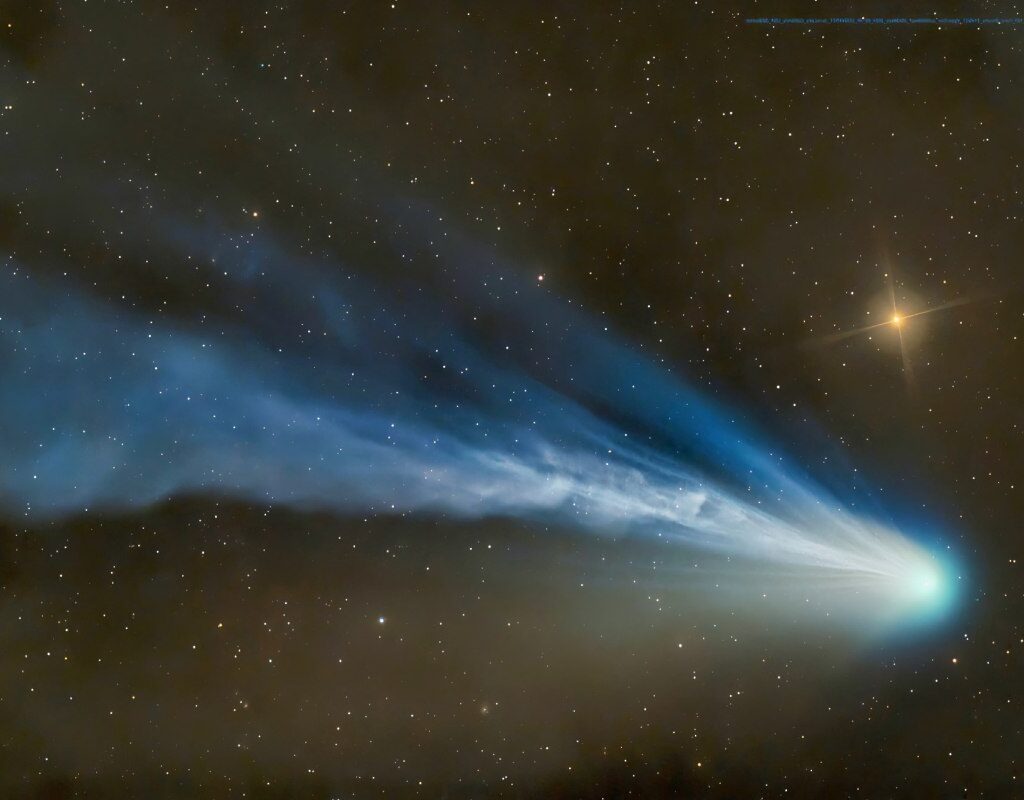The Comet Elenin, a celestial body that captured global attention, was discovered on December 10, 2010. Its emergence spawned myriad theories and speculations about its influence on significant terrestrial events, including the devastating earthquakes in Chile and Japan.
Journey of Comet Elenin: Alignments and Prophecies
Comet Elenin, once the subject of numerous conjectures, was thought to potentially have catastrophic effects on Earth.
Among the most alarming hypotheses were the activation of volcanoes, solar flares, the reversal of Earth’s poles, and disruptions in the moon’s orbit. These ideas persisted until December 21, 2012, the date marking the comet’s last significant alignment with our planet.
NASA reported that on September 27, 2011, Comet Elenin aligned perfectly with Earth and the Sun, a phenomenon similar to that on March 11, 2011, the day of the magnitude 9.0 earthquake in Japan. It was also reported that the comet was not alone in its trajectory but was accompanied by a considerable amount of space debris.
This debris, part of the comet’s “tail,” raised the possibility that, as it passed close to Earth, it might leave space junk that could affect us in some way. Intriguingly, reports from the Chinese Space Station indicated that an unidentified object was following the comet on its path.
The proximity of Elenin to Chile began on September 26 and 27, extending for approximately three days. The distance was so short that it generated fears of possible catastrophic consequences, including the risk of an unprecedented earthquake.
This astronomical event even echoed in religious spheres. Some Catholic believers linked it to the biblical prophecies of three days of darkness.
Leonid Elenin: The Discoverer of the Comet
Leonid Elenin, a Russian astronomer, was the one who discovered the comet named after him on December 10, 2010.
At that time, the comet was about 600 million kilometers from Earth, measured approximately 500 km in diameter, and was heading towards the inner solar system.
NASA acknowledged that the comet would pass close to Earth but assured that it would not have a significant impact on our planet. October 16, 2011, was the date when the comet was closest to Earth, an occasion when, according to NASA scientists, the comet’s influence on our planet was negligible.
The fear generated by Comet Elenin originated from studies that found correlations between its alignments with Earth and some of the most devastating earthquakes in recent times.
Chronology and Trajectory: Elenin’s Encounters with Earth
- February 27, 2010: alignment with the 8.8 magnitude Chile earthquake, at a distance of 6.042 astronomical units (AU) from Earth.
- September 4, 2010: alignment with the Christchurch, New Zealand, earthquake of magnitude 7.2, at 6.258 AU from Earth.
- March 11, 2011: alignment with the 9.0 magnitude Japan earthquake, at 2.101 AU from Earth.
- September 27, 2011: the closest alignment between Earth, the Sun, and Elenin, at just 0.381 AU away.
- October 16 to 19, 2011: Comet Elenin at its closest point to Earth, at 0.232 AU away.
- November 5, 2011: alignment at 0.348 AU from Earth, with the possibility of Elenin’s debris reaching our planet.
- November 23, 2011: alignment at 0.596 AU from Earth, coinciding with a partial solar eclipse.
- December 21, 2012: Elenin’s last alignment before moving away into deep space, at 5.20 AU away.
The astronomical unit (AU) is a measure of distance equivalent to the average distance between the Earth and the Sun, approximately 149,597,870 km.
While it is a good approximation, it does not reflect the exact precision of Earth’s real orbit.
The passage of Comet Elenin through our solar system left a legacy of curiosity and learning. Beyond the speculations, it taught us about celestial dynamics and the need for scientific interpretation in the face of unknown phenomena.




